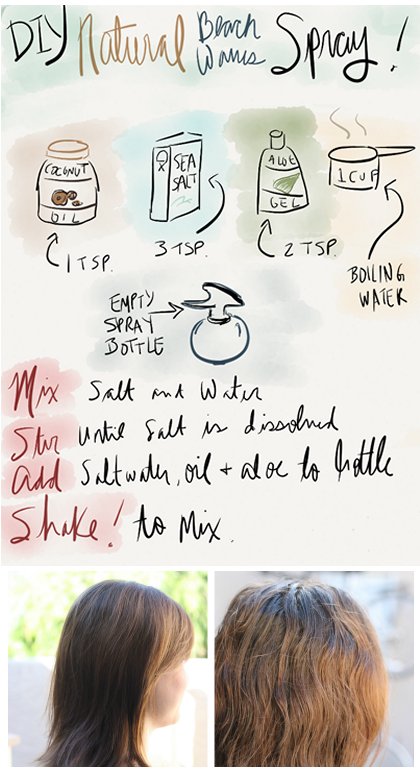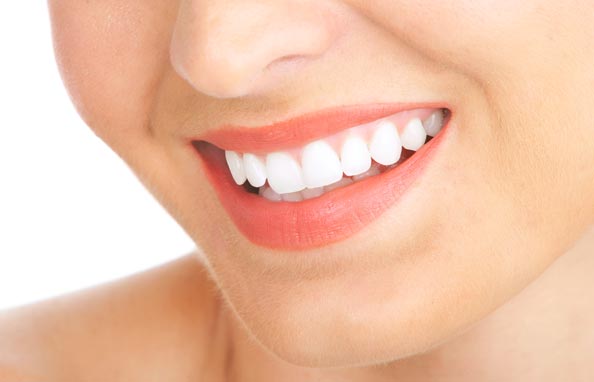|
To use, spray on damp hair and scrunch with a towel to dry for loose beach waves. Spray on dry hair and on roots for volume and texture without the waves.
How easy it that? This is one of the simplest, natural hair care recipes to make at home, and it literally costs a fraction of the store bought versions. It adds great texture and volume to hair without the chemicals. by making it yourself, you can also customize to your hair type to get the texture you want. Here's an alternative recipe with a few extra ingredients. DIY Beach Spray Ingredients: • 1 cup of hot water (not boiling)- Can also use strong Chamomile Tea as the base if you want to lighten hair or black tea as the base if you want to darken hair, but you will need to keep in the fridge. • 2 tablespoons Epsom salts (or more for extra texture) • 1/2 tsp Himalayan or sea salt (optional but adds stiffness) • 1 teaspoon aloe vera gel • 1/2 tsp sweet almond oil or jojoba oil • Optional: a few drops of essential oil (lavender and citrus are great options) • Optional: 1 teaspoon lemon juice and 1 teaspoon vodka or alcohol- if you want to lighten hair (the lemon juice lightens and the alcohol preserves) Put the hot water (or tea) in the spray bottle and add the Epsom salts, sea salt (optional), aloe vera, oil, essential oils (optional) and lemon juice/vodka (if using). Put the cap on the bottle and shake for 1-2 minutes or until Epsom salts and sea salt are dissolved. Store in the fridge if using lemon juice or tea base, or at room temperature if you aren’t. Will last 3-4 months or longer. As stated above, to use, spray on damp hair and scrunch with a towel to dry for loose beach waves. Spray on dry hair and on roots for volume and texture without the waves. Let us know how it works for you, and we'd love for you to post before/after pictures!
4 Comments
Do you detest the toxic chemicals of the commercial cleaners on the market? Have you switched to green cleaning products? Or perhaps you're thinking about making the switch, but you're confused and don't know where to start. Green cleaning DIY to the rescue! It's not complicated either. All you need are a few basic ingredients for all your household cleaning to transform your cleaning supplies. The basic supplies you need are:
• Baking Soda • White Vinegar • Hydrogen Peroxide • Essential oils, like tea tree oil, lavender oil, eucalyptus oil, or lemongrass oil • Castile Soap (like Dr. Bronner's) • Fresh Herbs, citrus, or citrus peels • Vegetable Oil • Salt These are inexpensive, easy-to-use, and environmentally safe alternatives, which can safely be used in place of commercial household products. They can be used alone or in combination for a wealth of household applications. Here's what you can do with these products. Baking Soda - cleans, deodorizes, softens water, scours. White Vinegar - cuts grease, removes mildew, odors, some stains and wax build-up. Hydrogen Peroxide - removes laundry stains, whitens clothes, cleans fruits and veggies, sanitizes, de-germs. Essential Oils - effective against most household bacteria. Soap - unscented soap in liquid form, flakes, powders or bars is biodegradable and will clean just about anything. Avoid using soaps which contain petroleum distillates. Fresh Herbs, Citrus, or Citrus Peels - cleans, deodorizes, effective against bacteria. Vegetable Oil - polishes wood Salt - abrasive All-Purpose Cleaner: Mix 1/2 cup vinegar and 1/4 cup baking soda (or 2 teaspoons borax) into 1/2 gallon (2 liters) water. Store and keep. Use for removal of water deposit stains on shower stall panels, bathroom chrome fixtures, windows, bathroom mirrors, etc. All-Purpose Cleaner: Mix 2 cups water, 1 cup hydrogen peroxide, and 1/4 cup lemon juice. Store and keep. You can use this cleaner for everything from streak-free mirrors to wiping out the cat litter box. You'll find a list of simple green cleaning recipes at Earth Easy. What's are your favorite natural cleaning alternatives? A couple days ago while trimming trees and bushes encroaching on the driveway, I inadvertently brushed against some poison oak. Oddly enough, I'm not reactive to poison ivy, but poison oak is a different story. If I had known the poison oak had touched my skin, I would have immediately washed the area, an effective deterrent within 15 minutes of contact. I wasn't so lucky this time, but fortunately there were only a couple spots. Initially, I ignored them, but, of course, they itched, so I finally pulled out my simple DIY calamine lotion recipe. It worked like a charm! Instant relief and the spots healed overnight. Silly me for waiting so long! I snapped a quick shot of what the mixture looks like - no fancy photo here, but you'll get the idea of the proper consistency. 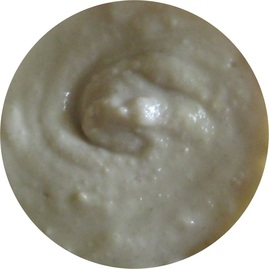 Now, here's the formula: 1 part sea salt 1 part baking soda 1 part bentonite clay 1 1/2% essential oils (use one or a combination of lavender, geranium, chamomile, yarrow, peppermint, and/or tea tree) enough distilled water to make a paste Be sure to add the water a few drops at a time or you may make it too thin and will have to increase the dry ingredients and essential oils to get the right consistency. If you only need a tiny bit, for each part, use 1/2 teaspoon each for the dry ingredients and about 5 drops of essential oil. Be sure to use up your calamine lotion within 10 days and keep it refrigerated. Best advice . . . leaves of 3, leave them be . . . but if you do get a rash, give this recipe a try. You'll be glad you did! Do you have a favorite calamine lotion recipe? If so, please share! Who doesn't want white teeth? Unfortunately most of us have been taken in by the need to use commercial toothpaste which may contain chemical fillers and ingredients such as glycerin and fluoride. Did you know that fluoride is a toxic waste by-product of the phosphate fertilizer industry or the aluminum or steel industry? We are beginning to understand the harmful effects of fluoride on our bodies. Glycerin coats the enamel on your teeth and prevents re-mineralization from saliva.
We can prevent and even heal cavities by the food we eat. It's best to eliminate processed foods and eat more free range eggs, raw milk and butter, fish and good vegetables. With a good diet and using tooth powder, you will greatly improve and strengthen your teeth. Try this simple tooth powder recipe: 4 Tablespoons aluminum-free baking soda 2 teaspoons fine sea salt Baking Soda helps whiten teeth. In saliva, baking soda buffers & neutralizes plaque acids, helps clean your teeth and counteract acidity in the mouth. It's slightly abrasive consistency works as a cleanser of teeth and gums, so brushing your teeth with baking soda, with its high pH and disinfectant and antiseptic properties, will reduce harmful oral microbial flora by killing off acid-loving bacteria. Sea salt whitens your teeth and is good for firming the gums and keeping them healthy. Add essential oil: clove helps heal gums; tea tree is a great all around antiseptic; peppermint is antibacterial, anti-inflammatory, antifungal, antimicrobial, antiseptic, and astringent; spearmint is antibacterial, anti-inflammatory, antiseptic, and astringent; clary sage helps tighten and whiten teeth and they have astringent/antibacterial properties. Optional: montmorillonite ore bentonite clay is great for polishing teeth and clearing up stains. Optional: stevia powder for sweetness Optional: myrrh gum powder for its excellent antiseptic properties and overall oral health capabilities There are many other options, but this will get you started if you haven't made your own tooth powder before. Do you have a favorite tooth powder recipe? If so, do share with us!  Jagged Defense Shaving Cream, Razor Glide Shaving Oil At the beginning of the new year, we promised you new products and we are getting ready to roll them out! It takes a lot of work to make sure our products are ready for you through proper formulation and testing, so thanks for your patience. Take a peek at what we have in store for you. We're sure you'll be as pleased with them as we are! Jagged Defense Shaving Cream 3 oz $25 Our natural shaving cream is ideal for both men and women. It is excellent for a man's bristly beard, as well as for the softer feminine hair on legs, underarms, bikini and Brazilian. It soothes the skin and helps with razor nicks. Jagged Defense moisturizes, provides a smoother, irritation-free shave, creates slip with superior lubrication and prevents razor drag. Helps eliminate razor burn and rashes, while protecting against the harsh environment. You can expect smoother and suppler skin. Works great in combination with our Razor Glide Shaving Oil. To use: Massage cream into clean, wet skin to soften skin, uplift hair follicles, and provide slick razor surface. Shave with the grain to prevent nicks. Can be used solo or combined with our Razor Glide Shaving Oil for turbocharged results. Edible Organic Ingredients Garcinia Indica (Kokum) Seed Butter, Limnanthes Alba (Meadowfoam) Seed Oil, Prunus Amygdalus Dulcis (Sweet Almond) Oil, Hamamelis Virginiana (Witch Hazel) Water, Persea Gratissima (Avocado) Oil, Lecithin, Leuconostoc/Radish Root Ferment Filtrate, Cucumis Sativus (Cucumber) Peel Extract, Carota Sativa (Carrot) Seed Oil, Lavandula Angustifolia (Lavender) Oil Razor Glide Shaving Oil 1 oz $25 Works wonders for both men and women on even the most sensitive skin. Razor Glide provides greater protection, smooth glide-enabling and superb moisturizing properties, giving you a closer, consistently smooth and irritation-free shave. The organic ingredients help eliminate razor burn due to its protecting ability and moisturizing effect without clogging pores, leaving your skin conditioned and moisturized, not oily. It applies clear, so you can actually see where you are shaving with no mess! Say goodbye to cuts and nicks! Our shaving oil is a blend of vegetable oils or silicone oils and essential oils that can be used as a stand-alone shaving lubricant or as pre-shave underneath shaving cream, soap or gel, to facilitate shaving facial and other body hair. If a pre-shave is your preferred method, we highly recommend using it in combination with our Jagged Defense Shaving Cream. Often these products would work best by wetting the area before the razor being used. The concentrated formula delivers a comparable number of shaves as commercial brands, up to 100 shaves. To use: Massage a few drops of oil into clean, wet skin to soften skin, uplift hair follicles, and provide slick razor surface. Shave with the grain to prevent nicks. Can be used solo or combined with our Jagged Defense Shaving Cream for turbocharged results. Razor Glide moisturizes, provides a smoother, irritation-free shave, creates slip and prevents razor drag. Helps eliminate razor burn and rashes. Works great for men and women. Edible Organic Ingredients Limnanthes Alba (Meadowfoam) Seed Oil, Persea Gratissima (Avocado) Oil, Oryza Sativa (Rice) Bran Oil, Ricinus Communis (Castor) Seed Oil, Orbignya Oleifera (Babassu) Seed Oil, Vitis Vinifera (Grape) Seed Oil, Eucalyptus Globulus (Eucalyptus) Leaf Oil, Mentha Piperita (Peppermint) Oil, Citrus Paradisi (Grapefruit) Oil  Calming Comfort Balm Calming Comfort Balm 2.5 oz $50 Potent cell regeneration and repair capabilities help to alleviate irritated skin, bumps, bruises, wounds and burns. Treat ouchies organically with our special blend that promotes skin recovery, reduces redness and inflammation of the skin, while helping to relieve pain. It assists in soothing and calming skin, and aids in reducing discomfort, as it helps restore and protect dry or damaged skin. It is powerfully antiseptic, antibacterial and antifungal, with natural relaxant, anti-depressant properties. To use: Apply to affected skin and gently massage in, as often as needed. Safe for all ages, including infants. Edible Organic Ingredients Dromaius Novaehollandiae (Emu) Oil, Cannabis Sativa (Hemp) Seed Oil, Pentadesma Butyracea (Kpangnan) Seed Butter, Calendula Officinalis (Calendula) Flower Infused Helianthus Annuus (Sunflower) Seed Oil, Cera Alba (Beeswax), Lavandula Angustifolia (Lavender) Oil 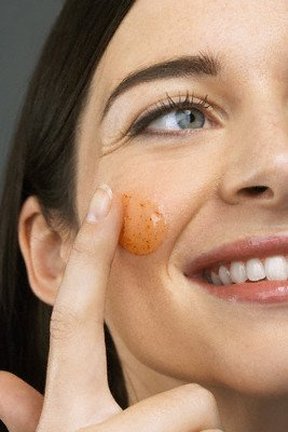 Honey Dew Facial Scrub We are also working on a honey facial scrub that gently exfoliates, tones with anti-aging and anti-acne properties. Sweeeet! We expect to roll out these new products within the next month, so be sure to check back soon. What products would you like to see in our store that we don't already offer? 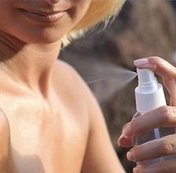 Summer brings sun and fun . . . as well as those pesky insects. Staying bite-free without having an unpleasant odor or using chemical-based repellents is easy to do with natural plant-based ingredients. They can be as effect as the chemical DEET, or diethyltoluamide, which is an oily chemical fluid that repels biting bugs; however, DEET can be harmful to your health, especially with overuse. Why take that chance? In a 2011 study on plant-based insect repellents conducted at London School of Hygiene and Tropical Medicine and Ifakara Health Institute in Tanzania, plant-based insect repellents may not have undergone the safety testing that DEET-based repellents have, yet they are deemed safe because they’ve been around a long time. Jeffrey Band, M.D., an infectious disease specialist, epidemiologist and chief of infectious diseases at William Beaumont Hospital in Royal Oak, Michigan, and director of the hospital’s Interhealth: Health Care for International Travelers, states that natural insect repellents are based plant ingredients, such as oil of lemon eucalyptus, citronella, Neem [tree] oil and even wild tomatoes. Here are some suggestions on what you can use, instead of DEET. Natural Insect Repellents 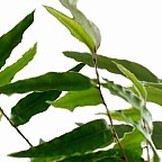 Lemon Eucalyptus Comes from leaves and twigs of an Australian tree, repels mosquitoes, ticks and flies, and is recommended for use by the Centers for Disease Control and Prevention (CDC), if you are traveling to an area where malaria and yellow fever are primary concerns. This oil masks 340 different scents our skin gives off that are target locators for insects, according to the Agricultural Research Service, the U.S. Department of Agriculture’s chief scientific research agency. Note: It’s easy to confuse lemon eucalyptus oil with the essential oil of lemon eucalyptus, which isn’t approved by the Environmental Protection Agency (EPA) as an insect repellent. The essential oil does provide protection, though it is not recommended for use in disease-endemic countries. Mixed with a fixed oil, such as jojoba or sesame (natural sunscreen), the essential oil is safe for wearing in the backyard swimming pool or to a local park. 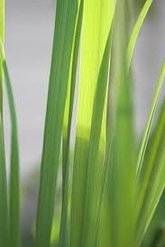 Citronella This is perhaps one of the oldest and most widely used plant-based insect repellents. It is derived from dried cultivate grasses, and its strong smell repels mosquitoes, sand flies, ticks, midges and flies by masking the smell of human skin. The strong odor may be offensive to some, so it is best mixed together with other essential oils, such as geranium, in a fixed oil like jojoba or sesame. It’s as effective as DEET, has a 50-year safety record, according to the CDC and is EPA-approved. 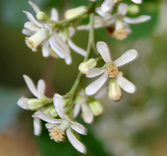 Neem Extracted from the seeds of the Indian Neem tree, this is a well documented repellent that can actually disrupt the reproductive and molting cycles of mosquitoes, head lice and fleas. Insects can’t feed or reproduce off from it, so they leave. It can offer up to eight (8) hours protection from mosquitoes, based up a 2003 study performed at Venezuela’s Instituto de Salud Publica, which recommended its use in countries with malaria and yellow fever. Neem oil is often used in skin moisturizers and soaps, and is supported as such by the EPA, so as a skin lubricant, it need not be washed off after use, as other chemical repellents should.  Wild Tomato Cornell University and North Carolina State University researchers have discovered that tomato plants carry a compound, which is an effective repellent against mosquitoes and other biting insects, including ticks. Tomatoes have alkaloids in their leaves, which act as a natural insect repellent and mimic DEET but without the potential health hazards. This compound was approved by the EPA in 2007. Tomato leaves are not known to be toxic to humans but always use caution in of allergies; however, they are toxic to pets.Leaves soaked overnight make an effective solution in the garden on plants and as an insect repellent. Soak 1 to 2 cups of chopped or mashed tomato leaves in 2 cups of water overnight. Strain through cheesecloth or fine mesh, add about 2 more cups of water to the strained liquid. Be sure to keep this spray and the leaves away from your pet. Other oils to consider for repelling insects include thyme, rose, palmarosa, peppermint, cedar, patchouli and clove, according to a recent 2011 London study, as well as cinnamon, rosemary, lemongrass, peppermint, geranium, verbena, pennyroyal, lemon, lavender, pine, cajeput, basil, and castor oil.
Clove oil provides 100% protection for two (2) to four (4) hours, based on a 2005 study by Mahidol University in Bangkok. For maximum protection, it is advisable to mix clove oil with other oils. Carolyn Dean, M.D, N.D., of Hawaii is a naturopath and physician specializing in alternative medicine, and she suggests a combination of cedar, rose, geranium and clove by combining 10 to 25 drops of essential oils with two (2) tablespoons of oil, such as olive, sunflower or other vegetable oil. Be aware that some may find the scents too strong or offensive, however, if mixed with other oils, you can create a pleasant effective combination. Though they may last longer, it is advisable to reapply natural insect repellents every two (2) hours and more often if skin becomes wet, as they are not waterproof and must be reapplied after swimming, rigorous exercise and sweating. Other application tips: · Apply repellent only to exposed skin and never under clothing because it increases the risk of skin irritation. Instead, tuck pant legs into socks and wear long sleeves, Lea advises. · Don’t put on cuts, wounds or rashes, because bug sprays can worsen the irritation. · Don’t apply near eyes or mouth and use sparingly around ears. · Don’t spray directly on the face. Instead, apply on hands first and then rub on your face. · Wash hands after application to avoid accidental exposure to eyes. · Never let children apply insect repellent themselves. Instead, put some on your hands first and then gently spread on exposed skin, avoiding their hands, which often go into mouths. · Use just a thin layer of repellent to cover exposed skin. More isn’t necessarily better. If the insects are still biting you, apply more repellent. · After returning indoors, wash treated skin with soap and water. · Wash treated clothing before wearing it again. · If you experience a rash, itching, swelling or other side effects, wash off repellent with mild soap and water and discontinue use. We have found a great combination that is quite pleasurable and works effectively against mosquitoes with essential oils of lemongrass, peppermint, lemon and lavender, mixed with oils, butter and waxes. We are currently in the testing stages for this product and expect it to be available on our website very soon. |
Contact UsAuthorWelcome! I'm Stephanie (Jo to close friends), founder of EdenSong. Aside from my university studies, I have a natural passion for all things organic. I enjoy living and learning about natural ways, all things health related, cooking, gardening with herbs and flowers, photography, DIYing, yoga, bicycling, ballet, traveling and being with family and friends. A quirk of mine is my near obsession of Asian culture, particularly Korean history and its language. Would you like to know more? Find out about us. Categories
All
Archives
December 2014
© EdenSong Essentials
All Rights Reserved |
|
Sign up for monthly free tips and recipes.
|
Shop About Us Contact Us Ingredients Endorsements Terms & Policies Get in Touch Customer service or wholesale inquiries, please leave us a message: 615.292.1000 Or better yet, email us: [email protected] |
Connect Socially
© EdenSong Essentials
All Rights Reserved |
